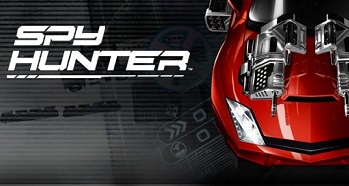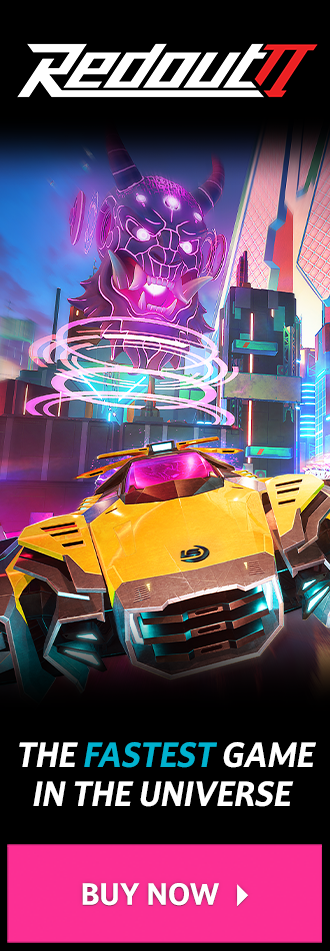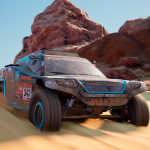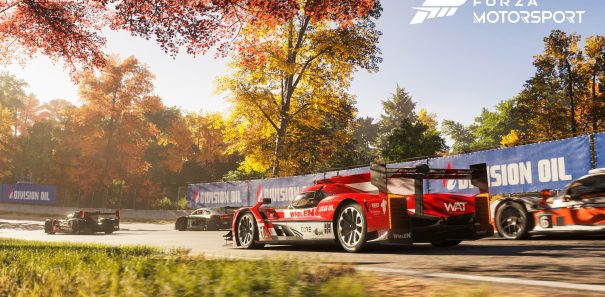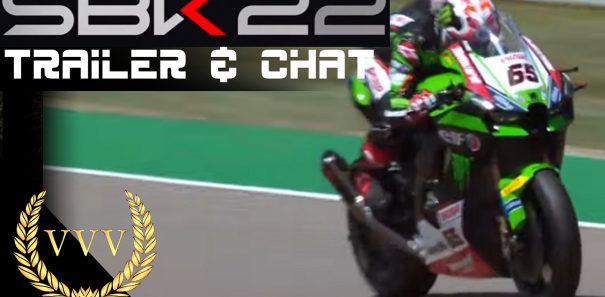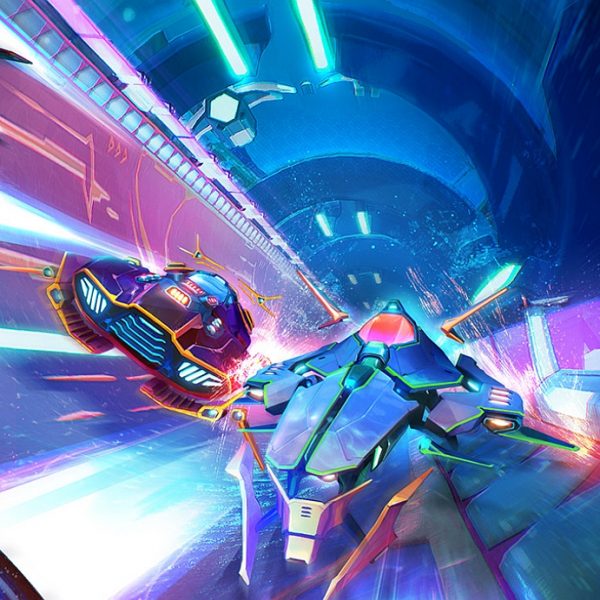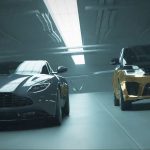Those of you who are a bit older than me will probably have fond memories of wasting your precious pocket money on Spy Hunter. Now considered a coin-up classic, the original Spy Hunter stands as one of the defining combat car games of the 1980s that casted you as an anonymous agent with a simple objective: drive a souped-up spy car fitted with weapons known as the G-6155 Interceptor and blast enemy cars into oblivion on a never-ending highway.
And yet despite advances in technology, none of Spy Hunter’s subsequent remakes on home consoles managed to rekindle the spirit of the fabled original. While the series’ first leap into 3D was a relatively decent mission-based action driving game on the PS2 in 2001, the last we saw of the series was back in 2006 with Spy Hunter: Nowhere to Run, a game that wasted most of its budget on licensing Dwayne ‘The Rock’ Johnson’s bulging biceps. It was also the first and only game of the series to feature insipid on-foot levels. Unsurprisingly, a film tie-in was planned but has yet to materialise, before being picked up by Zombieland director Ruben Fleischer for a future release.
Like many classic series, it seemed that Spy Hunter wasn’t destined for 3D – like a film being re-released with dazzling special effects, they simply lacked the inimitable charm of the top-down original.

The Spy who loathed me
Developed by TT Games, Spy Hunter is the latest attempt to revive the series, this time exclusively for the current crop of handhelds the PlayStation Vita and Nintendo 3DS, which in theory sounds like an ideal platform for Spy Hunter’s short blasts of nonstop action. With it comes an all-new G-6155 Interceptor (let’s call it the MKVI if we’re counting the number of core Spy Hunter games) once again kitted out with a myriad of high-tech weapons that would make James Bond jealous.
Which brings us to Spy Hunter’s first fatal flaw: the Interceptor is now red. It may sound like a minor quibble, but it’s hardly a fitting choice of colour for a sleek superspy and completely contradicts the spirit of the series which, traditionally, have had silver or black Interceptors. Thankfully, you can at least rectify this by unlocking paint jobs.
The vast majority of your time playing Spy Hunter is spent using the Interceptor’s arsenal of weapons to take out enemy vehicles, so a responsive driving model is essential if you’re to have any hope of lining up targets with precision. Unfortunately this is not the case here, and it soon becomes clear why so many of Spy Hunter’s missions mostly take place on straight roads – the Interceptor’s haphazard handling makes it much harder work than it should be to aim your sights at moving targets.
Worse still, the rear view is triggered by holding the analogue stick down – the very same one you use to steer the car. It’s incredibly frustrating, to say the least, when you end up hitting walls from inadvertently activating the rear view due to a poorly thought-out control scheme.
Along with its stash of concealed weapons, the Interceptor can also transform into an off-roader or a boat to handle rapid terrain changes, but, despite the joy of having the sound of Transformers play in my head every time the admittedly cool animation played out, the twitchy handling still remains regardless.
Being an action title rife with carnage, there was a good opportunity for Spy Hunter to flex the Vita’s graphical muscles and deliver some spectacular on-screen eye candy, but TT Fusion completely missed the mark here as well. Spy Hunter is unfortunately plagued by poor production values that diminish the spectacle of the on-screen destruction – car models look shoddy and low-res, explosions are pitiful, environments are bland, samey and full of fogging, and, while cars do disintegrate during explosions, there’s no damage or debris.
In truth, the reason why Spy Hunter’s visuals are so despairingly lacklustre is because the Vita version is actually a port of the 3DS game. I found this to be an odd setback. Of the two consoles, the Vita is widely known to be technically-superior to the 3DS, so it’s odd to find it’s the core version of the game, especially when it’s usually the Wii that’s given the watered down ports of the PS3 and Xbox 360 games.
It’s a travesty, really, because, as we’ve seen with the likes of WRC3 and Need for Speed: Most Wanted, the Vita is more than capable of producing console-quality graphics, and yet some developers have barely tapped into its potential. While you could argue that those titles were ports of existing console games and therefore easier to code, there’s no excusing the fact that Spy Hunter looks like a 5 year old PSP game.
Despite the technical limitations, Spy Hunter is fun to play in small doses with quick fire pick-up and play missions, but repetition soon sets in. Every mission starts with you in the weapons truck where you can equip the Interceptor with your own choice of weapons by using the touch screen to arrange your loadout. Thankfully, unlike some games that overdo the implementation of touch screen technology to justify the hardware, Spy Hunter uses it sparingly. In a neat touch, you even get to start the Interceptor up by pressing a big blue ignition button with the touch screen.
Fully loaded
Weapons are mapped to each of the Vita’s face buttons for quick and easy access, and more advanced weapons also unlock as you progress through the campaign. Swarm missiles are by far the easiest and most satisfying method of obliterating enemy cars, and it’s fun trying to see how many cars you can target simultaneously, before reducing them all to tumbling burnt out shells. Elsewhere, the remaining weapons are pretty standard, including a shotgun, machine guns, flamethrowers and shockwaves – the latter two are particularly useful for destroying enemies that pull alongside you.
Swarms of surrounding enemy vehicles appear in all shapes and sizes (although in only one colour – black, would you believe) from SUVs with mounted machine guns and mines to cars armed with spiked wheels that are just asking to be blasted with your side shockwave. Enemies become more advanced in later levels however, as you face hovering helicopters, tailgating trucks and suicidal ‘Screamers’ that are essentially moving bombs.
There are at least a few attempts to break away from the repetition of Spy Hunter’s constant car combat. One mission erupts into a frantic police chase that relies on your driving skills, or rather your ability to keep the Interceptor driving in a straight line, while others have you in control of an overhead UAV, tapping targets with the touch screen to activate air strikes on unsuspecting enemies. On-rails sections where you mount a machine gun on your moving weapons truck that’s under fire also provide some fun distractions, but the lack of precision in the aiming makes it a frustrating exercise. They’re ultimately short-lived, and you often have to restart the entire level if you fail.

As if you really needed context for driving a car with guns blasting bad guys at breakneck speed, TT Fusion attempts to tell a story throughout the missions. It’s a predictable tale of terrorists who are intent on world domination etc etc, led by an unknown villain who is distinguished by their raspy voice that sounds like a Decepticon.
Annoyingly, Mr. Decepticon will frequently interrupt your communications, forcing you to listen to the cringe-worthy dialogue. Yes, it’s deliberately cheesy and in-keeping with Spy Hunter’s OTT b-movie vibe, but the voice taunts you far too frequently, distracting you from the action at times.
It’s especially jarring when the developers didn’t bother enlisting any other voice actors, as the cast of characters that represent your team are lazily represented by goofy caricatures (one of whom looks like an offspring of Hitler) that pop up and pause the action with on-screen textual dialogue, destroying the flow of gameplay.
Many of Spy Hunter’s shortcomings could have been forgiven if it was released as a budget digital download on PSN or XBLA. It wasn’t, though – this is a full retail release, albeit at a cut-down price compared to first party Vita games that, absurdly, often cost the same as a new PS3 game. With a brief campaign of 23 short missions and no extra modes, there’s little in the way of replay value to justify the asking price. There’s no online multiplayer either to make matters worse, although Spy Hunter does support ad-hoc multiplayer for up to 4 players.
Spy Hunter is something of a missed opportunity. There’s some mindless fleeting fun to be had, but its repetitive gameplay, subpar presentation, erratic car handling and limited lifespan prevent it from being the return to form it should have been. Still, at least they managed to get one thing right that will please fans of the original: the Peter Gunn theme is present and correct, in a new reimagined version composed specifically for the game by Grammy Award-nominated artist Ryan Shore. After all, it wouldn’t be Spy Hunter without Peter Gunn.
Our Review
Summary
Spy Hunter is something of a missed opportunity. There’s some mindless fleeting fun to be had, but its repetitive gameplay, subpar presentation, erratic car handling and limited lifespan prevent it from being the return to form it should have been.


